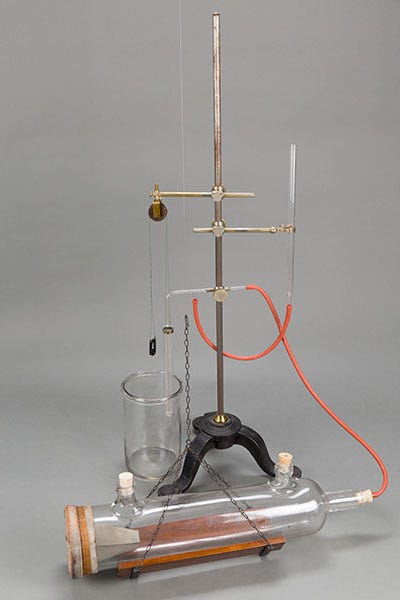Brian Buntz
March 3, 2016
1 Min Read
The Mosso plethysmograph was designed by Angelo Mosso in 1874. He used it to detect and record blood pressure changes. This specimen was made by Charles Verdin, France, 1870-1890
A person would put his arm in a glass tube filled with water. As his blood pressure increased or decreased, changes in volume in the tube resulted in water displacement, the amount of which was transferred to a stylus and recorded on a revolving drum.
This "graphic method" was a movement that allowed scientists to better record and compare otherwise unobservable small muscular movements and pressure and volume changes of the body.
Continue >>
All images courtesy of the Bakken Museum
About the Author(s)
Sign up for the QMED & MD+DI Daily newsletter.
You May Also Like





